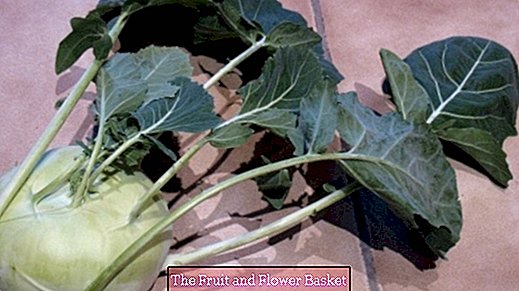Use leaves, stems, herbs and peel of vegetables
So far, I always have the leaves z. B. from Kohlrabi already removed when buying and disposed of in the appropriate waste container, until I recently learned in a TV program that you use in various vegetables not only the leaves and stems, but also the herb and the shell in the preparation can.
Then I got a little more informed and found out that there are actually many types of vegetables in which this is so and you can use this actual waste for the preparation and refinement of healthy and tasty dishes with. They can be used both raw and cooked, as they are not only aromatic, but also very healthy and usually contain even more vitamins and nutrients than the actual vegetables, so much too bad for the bio bin.
But it is important that you only use fresh vegetables from your own garden or organic vegetables that have not been treated with pesticides or other substances.
Gemüsorten:
cauliflower
From the cauliflower you can not only boil the peeled and sliced stalk, but also cook the leaves well or prepare a soup or sauce from it. But you can also chop these small and dry and then use later as the basis for a delicious vegetable broth.
broccoli
Likewise with the broccoli, the harder peel is easily peeled from the stalk and cut into slices or strips and pre-cooked for a few minutes before cooking the florets. Also for the preparation of a soup is the stalk. Even in the raw state, it can be roughly grated added to a fresh salad.
fennel
The fennel green and the stalk taste sweeter and more aromatic than the fennel tuber itself.
carrots
Carrots can be washed thoroughly with the shell. Because the green of the carrots contains much more calcium than the carrots themselves, it can be used to flavor stews, soups or salads. Especially the fine young green with the stems can be used because of the mild taste as an ingredient for green smoothies or pesto. Finely chopped and dried it is a fine condiment.
kohlrabi
For the preparation of a vegetable pan with kohlrabi and zucchini you can use the fresh leaves and stems cut into small pieces and the tuber must not be peeled. Cooked in a soup, the leaves give a delicious aroma. You can also steam them and make them like spinach or fill them with minced meat like stuffed cabbage rolls. Because the cabbage leaves contain almost twice as many vitamins as the tuber, the young, fresh leaves can be finely chopped mixed with a raw salad or added to green smoothies.
leek
When leeks you should also use the dark green tips with, for. As in the recipe for a leek soup with minced meat and cream cheese.
radish
The leaves of radishes are very spicy and quite spicy. In addition to antibacterial mustard oils, they also contain plenty of vitamins. It can be used well for cream soups, as well as for raw salads and as an ingredient for pesto. Due to their savory taste, they can be used chopped and dried as seasoning.
radish
Even the radish can be used thoroughly washed unpeeled. Its fresh, finely chopped leaves are very suitable as a spicy ingredient for salads, soups and sauces and can also be dried used for seasoning.
Beetroot
The leaves of beetroot contain more beta-carotene and calcium than the actual tuber. The very young leaves can be eaten raw as a salad or used for smoothies. In terms of taste, they are very similar to chard. From the older leaves and stems you can prepare sauces or soups. They also taste very good if they are steamed briefly with a little butter.
cucumbers
If you wash green cucumbers thoroughly you do not have to peel them.
celery
Celery leaves can be used well for a vegetable broth or for smoothies.
asparagus
From the shells of white or green asparagus can still cook a delicious soup. But you can also collect the bowls and woody ends in a freezer bag and freeze, then later cook from it asparagus soup.
zucchini
The thoroughly washed zucchini can also be prepared with the shell.
Not suitable for consumption are:
Rhubarb leaves
These leaves are not edible, but due to the oxalic acid they contain, they can be used to make a spray to control pests in the garden (eg black aphids) and fungal diseases (herbaceous and brown rot). Because of their potassium content, they can also be used well as fertilizer.
Tomato leaves
Since this nightshade plant contains the poisonous solanine, the leaves of tomatoes are also not edible.But you can incorporate the auspicious or cut leaves as fertilizer in the soil of the tomato bed.
The smell of the tomato leaves keeps away mosquitoes. If you rub your arms or legs with it, you are safe from mosquito bites.





